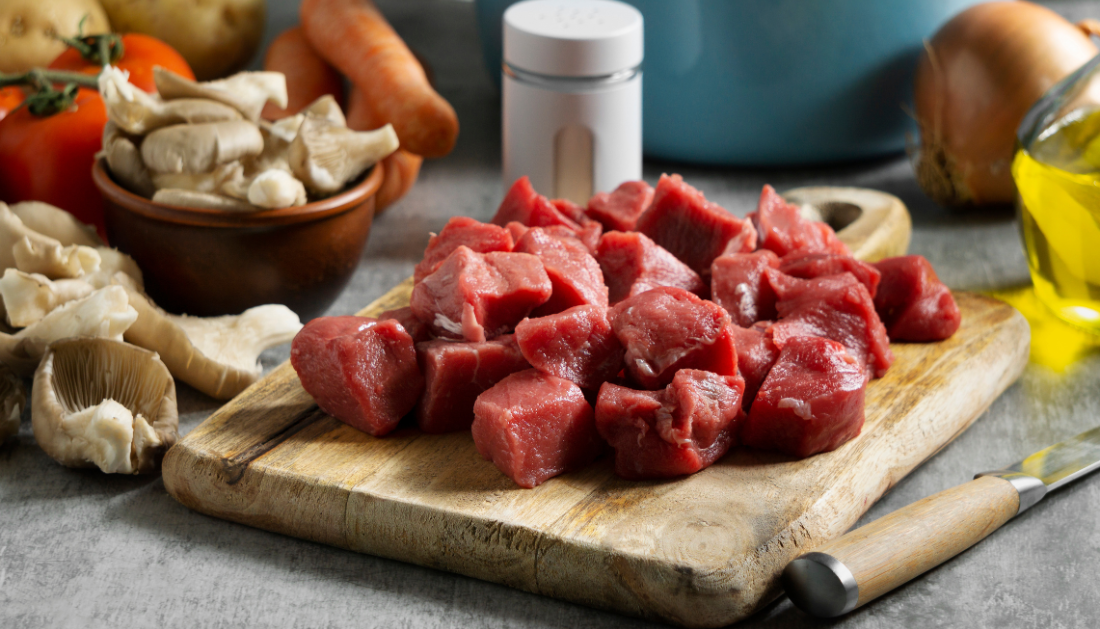

In a recent investigation disclosed in the Scientific Reports, scholars explored the correlation between red, processed, and white meat consumption and the likelihood of experiencing kidney damage and diabetic nephropathy (DN) in a group of 105 women and 105 matched controls. Background DN is a grave complication of diabetes mellitus (DM), which augments morbidity and mortality among individuals with diabetes. With the growing prevalence of diabetes, DN is becoming more widespread, prompting a necessity for effective prevention strategies. This condition is distinguished by elevated blood pressure (BP), diminished kidney function, and substantial albuminuria, which can escalate to end-stage renal disease (ESRD). Diets high in red and processed meat are connected to increased oxidative stress and inflammation, factors that contribute to DN. More research is required to elucidate the mechanisms by which meat consumption influences the development of DN and to inform dietary recommendations for at-risk populations.
About the study In the current investigation, 210 participants aged 30-65 years, all with 3-10 years’ history of type 2 diabetes, were recruited between July and December 2016. This group comprised 105 cases and an equal number of controls, all diagnosed according to the American Diabetes Association criteria. Participants with significant comorbidities or inconsistent dietary data were excluded. Anthropometric measurements were obtained under controlled conditions, and dietitians assessed dietary intakes using a validated Food Frequency Questionnaire (FFQ).
The study categorized meat consumption into red meat (including beef, lamb, and various organ meats), white meat (comprising poultry and fish), and processed meats (such as sausages and canned fish), with intakes converted to daily grams using household measurements. Kidney function was assessed through glomerular filtration rate (GFR) and blood urea nitrogen (BUN) levels, while DN was identified by an albumin-to-creatinine ratio of 30 mg/g or higher in a random urine sample. BP and biochemical markers including fasting blood sugar, lipid profiles, and kidney function tests, were also recorded. Participant demographics and physical activity levels were documented through questionnaires.
Statistical analysis was conducted using SPSS, with logistic regression applied to explore the associations between meat consumption and DN, adjusting for variables such as age, physical activity, and medical history. The study adhered to ethical guidelines with participant consent and approval from the Tehran University of Medical Sciences.
Study results In the case-control study, 210 individuals with type 2 diabetes participated, and clinical characteristics showed a mean age of 55.37 years, mean weight of 72.49 kg, and mean body mass index (BMI) of 28.09 kg/m2. Approximately half of the participants had a history of nephropathy, while 22.4% reported cardiovascular disease (CVD).
Dietary behaviors and general health profiles varied according to meat consumption levels. Participants with higher red meat intake exhibited significantly elevated fasting blood sugar (FBS) and creatinine (Cr) levels. The consumption of white meat correlated inversely with diastolic blood pressure (DBP) and total cholesterol (TC) in case subjects, indicating potential cardiovascular benefits. Increased white meat intake was linked to lower Hemoglobin (Hb)A1c, triglycerides (TG), and albumin levels in control subjects. In contrast, greater consumption of processed meats was associated with higher FBS and Cr levels across both groups.
Nutritional analysis, adjusted for age and energy, revealed significant associations between red meat intake and various nutrients such as total fat, multiple vitamins, and minerals. Similarly, the consumption of white and processed meats was significantly related to increased levels of beneficial fatty acids and other nutrients, highlighting the complex nutritional impacts of these dietary choices.
The study employed binary logistic regression to explore the relationship between meat intake and DN, accounting for age, energy intake, albumin levels, Hb, physical activity, CVD history, and diabetes duration. High red meat consumption was directly linked to an increased risk of DN, with a maintained significance after adjusting for confounders. Conversely, high white meat intake was associated with an 80% reduction in the odds of DN, a protective effect that persisted in adjusted models. However, high processed meat intake mirrored the negative effects seen with red meat, increasing the odds of DN and other kidney-related markers. Higher red meat intake was also significantly associated with an increased risk of microalbuminuria and severe albuminuria, even after adjustments. In contrast, increased white meat consumption was consistently linked to reduced risks of these conditions.
Processed meat intake similarly raised the likelihood of adverse kidney outcomes, as indicated in the tables and figures. Further analysis revealed that high red and processed meat consumption were correlated with a decrease in GFR and an increase in BUN, underscoring the potential renal impacts of these dietary choices.
For more information: Consumption of red, white, and processed meat and odds of developing kidney damage and diabetic nephropathy (DN) in women: a case control study, Scientific Reports, https://doi.org/10.1038/s41598-024-59097-1
more recommended stories
 Can Ketogenic Diets Help PCOS? Meta-Analysis Insights
Can Ketogenic Diets Help PCOS? Meta-Analysis InsightsKey Takeaways (Quick Summary) A Clinical.
 Silica Nanomatrix Boosts Dendritic Cell Cancer Therapy
Silica Nanomatrix Boosts Dendritic Cell Cancer TherapyKey Points Summary Researchers developed a.
 Vagus Nerve and Cardiac Aging: New Heart Study
Vagus Nerve and Cardiac Aging: New Heart StudyKey Takeaways for Healthcare Professionals Preserving.
 Cognitive Distraction From Conversation While Driving
Cognitive Distraction From Conversation While DrivingKey Takeaways (Quick Summary) Talking, not.
 Fat-Regulating Enzyme Offers New Target for Obesity
Fat-Regulating Enzyme Offers New Target for ObesityKey Highlights (Quick Summary) Researchers identified.
 Spatial Computing Explains How Brain Organizes Cognition
Spatial Computing Explains How Brain Organizes CognitionKey Takeaways (Quick Summary) MIT researchers.
 Gestational Diabetes Risk Identified by Blood Metabolites
Gestational Diabetes Risk Identified by Blood MetabolitesKey Takeaways (Quick Summary for Clinicians).
 Phage Therapy Study Reveals RNA-Based Infection Control
Phage Therapy Study Reveals RNA-Based Infection ControlKey Takeaways (Quick Summary) Researchers uncovered.
 Pelvic Floor Disorders: Treatable Yet Often Ignored
Pelvic Floor Disorders: Treatable Yet Often IgnoredKey Takeaways (Quick Summary) Pelvic floor.
 Urine-Based microRNA Aging Clock Predicts Biological Age
Urine-Based microRNA Aging Clock Predicts Biological AgeKey Takeaways (Quick Summary) Researchers developed.

Leave a Comment